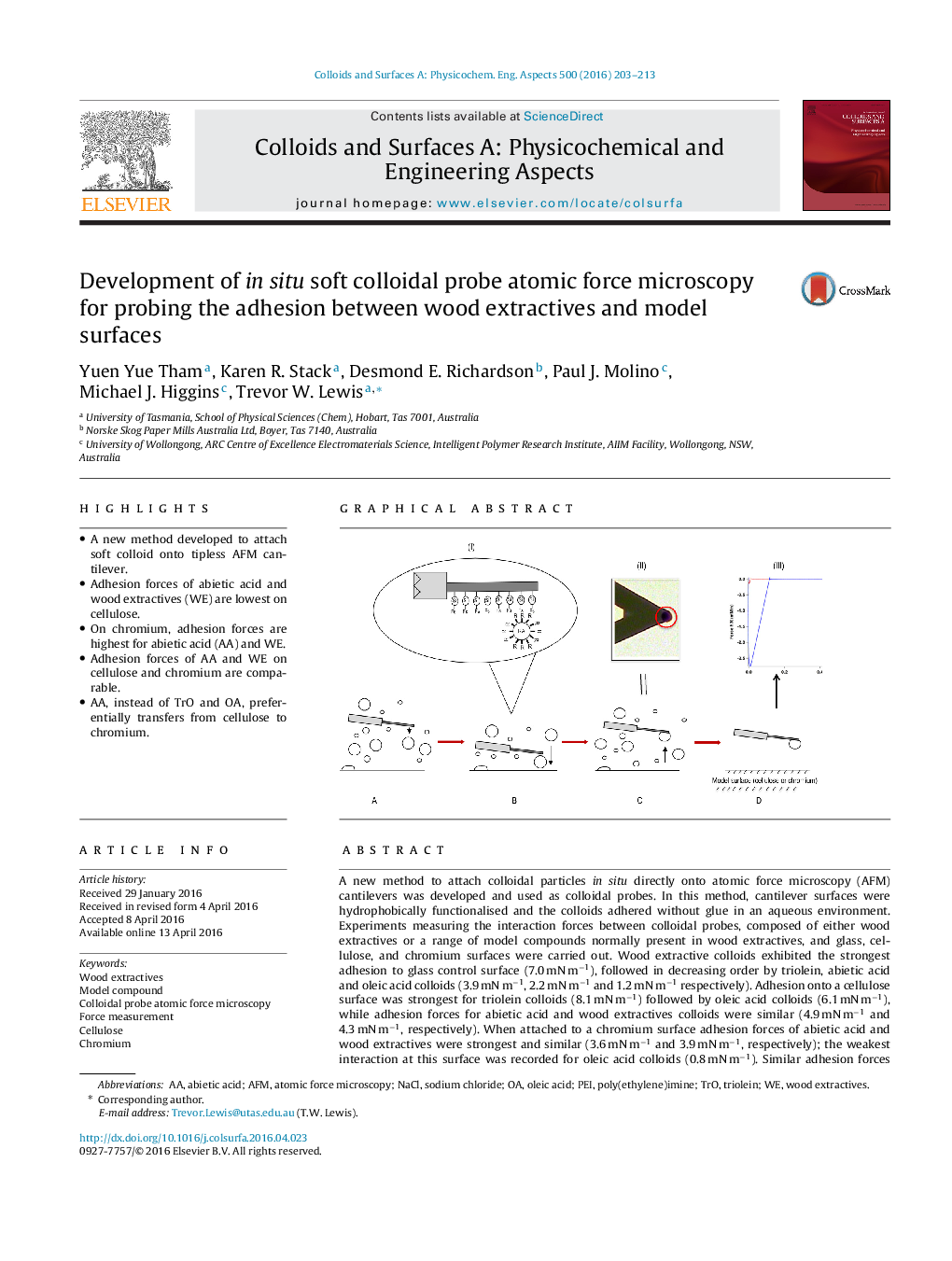| کد مقاله | کد نشریه | سال انتشار | مقاله انگلیسی | نسخه تمام متن |
|---|---|---|---|---|
| 591573 | 1453873 | 2016 | 11 صفحه PDF | دانلود رایگان |
• A new method developed to attach soft colloid onto tipless AFM cantilever.
• Adhesion forces of abietic acid and wood extractives (WE) are lowest on cellulose.
• On chromium, adhesion forces are highest for abietic acid (AA) and WE.
• Adhesion forces of AA and WE on cellulose and chromium are comparable.
• AA, instead of TrO and OA, preferentially transfers from cellulose to chromium.
A new method to attach colloidal particles in situ directly onto atomic force microscopy (AFM) cantilevers was developed and used as colloidal probes. In this method, cantilever surfaces were hydrophobically functionalised and the colloids adhered without glue in an aqueous environment. Experiments measuring the interaction forces between colloidal probes, composed of either wood extractives or a range of model compounds normally present in wood extractives, and glass, cellulose, and chromium surfaces were carried out. Wood extractive colloids exhibited the strongest adhesion to glass control surface (7.0 mN m−1), followed in decreasing order by triolein, abietic acid and oleic acid colloids (3.9 mN m−1, 2.2 mN m−1 and 1.2 mN m−1 respectively). Adhesion onto a cellulose surface was strongest for triolein colloids (8.1 mN m−1) followed by oleic acid colloids (6.1 mN m−1), while adhesion forces for abietic acid and wood extractives colloids were similar (4.9 mN m−1 and 4.3 mN m−1, respectively). When attached to a chromium surface adhesion forces of abietic acid and wood extractives were strongest and similar (3.6 mN m−1 and 3.9 mN m−1, respectively); the weakest interaction at this surface was recorded for oleic acid colloids (0.8 mN m−1). Similar adhesion forces for wood extractive colloids and abietic acid colloids (onto cellulose and chromium surfaces) reinforces the proposal that abietic acid occupies the outer layer of wood extractive colloids. The differences in the interaction between the colloids and the cellulose and chromium surface helps to explain the transfer of resin acid exclusively over triolein or oleic acid from a cellulose paper surface onto chromium plated printing cylinders.
Figure optionsDownload as PowerPoint slide
Journal: Colloids and Surfaces A: Physicochemical and Engineering Aspects - Volume 500, 5 July 2016, Pages 203–213
